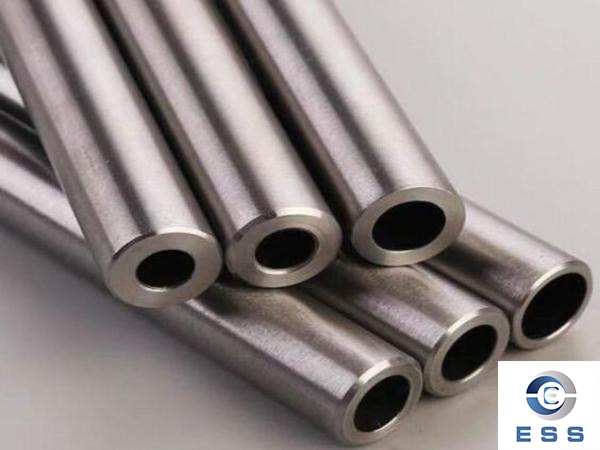
What is precision tube ?
Precision tube is a high-precision seamless steel pipe material after cold drawing or hot rolling. Due to its own advantages, it is mainly used to produce pneumatic or hydraulic components such as cylinders or oil cylinders.
Calculate the straightness and curvature of precision tubes
There are generally two ways to calculate the straightness and curvature of precision tubes:
1. Local curvature of precision steel pipes or seamless steel pipes: that is, use a one-meter-long ruler to measure the maximum curvature of the steel pipe, and measure its chord height (mm), which is the local curvature value. Its unit is mm/m, and the expression method is 2.5mm/m. This method is also applicable to the curvature of the pipe end.
2. Total curvature of the steel pipe: Use a thin rope to tighten from both ends of the pipe, measure the maximum chord height (mm) at the bend of the steel pipe, and then convert it into a percentage of the length (in meters), which is the total curvature of the length of the steel pipe.
For example: if the length of the steel pipe is 10m and the maximum chord height is 30mm, the curvature of the entire length of the pipe should be: 0.03÷10m×100%=0.3%
The curvature of precision tube
The curvature refers to the degree of curvature of the seamless steel pipe in the length direction, usually expressed as the curvature per meter of the seamless steel pipe. Excessive curvature may cause stress concentration in the seamless steel pipe during transportation, installation and use, thereby affecting the bearing capacity and service life of the seamless steel pipe. Therefore, accurate measurement of the curvature of the steel pipe is of great significance to ensure the quality of the steel pipe. The optical measurement principle is usually used to measure the curvature of 42CrMo precision seamless steel pipes. The straight-line distance of the steel pipe at different positions is measured by optical equipment such as laser rangefinders or total stations to calculate the curvature of the steel pipe. In addition, mechanical measurement principles can also be used, such as using length measuring machines or curvature measuring instruments for measurement.
Reasons for bending of precision tubes
The reasons for bending of precision steel tubes during rolling may be as follows:
1. Raw material quality problems
Raw material quality problems may cause precision steel tubes to bend during rolling. For example, internal defects, uneven composition, excessive impurity content, uneven organization, etc. of raw materials can cause precision steel tubes to bend during rolling.
2. Rolling process problems
Rolling process problems may cause precision steel tubes to bend during rolling. For example, improper rolling temperature, improper rolling speed, improper rolling pressure, etc. can cause precision steel tubes to bend during rolling.
3. Equipment problems
Equipment problems may cause precision steel tubes to bend during rolling. For example, insufficient precision of the rolling mill, poor surface quality of the rollers, unreasonable roller shape of the rollers, misalignment of the rollers or guide plates, improper adjustment of perforation parameters, etc. can cause precision steel tubes to bend during rolling; if the production equipment has aging or wear problems, it may affect the processing accuracy of the steel tube and cause bending.
4. Operation problems
Operation problems may cause precision steel tubes to bend during rolling. For example, insufficient operator skills and improper operation can cause precision tubes to bend during rolling.
5.Uneven heating of tube billets
If the temperature distribution of the tube billets is uneven during heating, the steel tube may bend after cooling.
6. Influence of cold drawing process
During cold drawing, if the deformation of the tube billets is uneven, the steel tube may also bend.
7. Improper straightening process
Steel tubes need to be straightened during production. If the straightening process is improper, the steel tube may bend.
8. Damage during lifting and transportation
During lifting and transportation, improper operation may cause the steel tube to bend.
9. Heat treatment problems
During heat treatment, if the temperature is improperly controlled or the cooling is uneven, internal stress may be generated inside the steel tube, causing bending.
In summary, the reasons for the bending of precision tubes may be multifaceted, and need to be analyzed and solved according to the specific situation.
Read more: Difference between seamless pipe and seam pipe













 Eastern Steel Manufacturing Co.,Ltd not only improve product production and sales services, but also provide additional value-added services. As long as you need, we can complete your specific needs together.
Eastern Steel Manufacturing Co.,Ltd not only improve product production and sales services, but also provide additional value-added services. As long as you need, we can complete your specific needs together.










